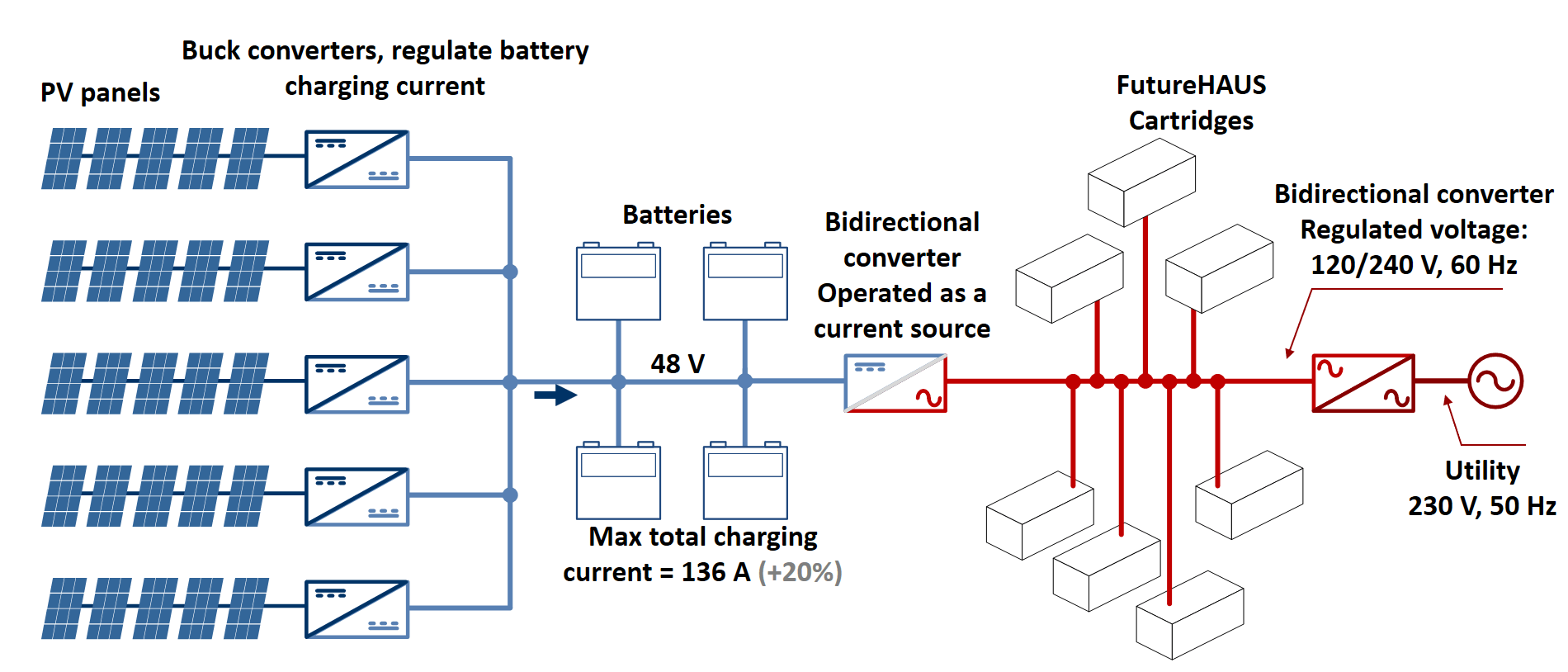LIBRARY
FutureHAUS nanogrid system and energy management algorithm

FutureHAUS featured a CPES-designed, advanced power electronics systema nanogrid, built to achieve a net-positive energy balance in the FutureHAUS, utterly minimizing, if not eliminating,utility grid dependence. Fig. 2 shows the utilization of solar energy during the test period (the dashed black line shows cumulative power production, the solid one is cumulative consumption, and the red shows solar power production). It comprised five solar arrays, aggregately contributing close to 14 kW of peak power. Each solar array featured a dedicated charge controller for increased reliability, as well as for independent, per string, maximum power point track- ing. An installed 14 kWh battery was the safest and least polluting rechargeable battery that could be found on the market, built with very high environmental standards and safe to be stored indoors with no need for venting or cooling. Furthermore, the efficient and contemporary 8 kW power inverter interfaced photovoltaics and batteries with the utility grid and served as a main generator of the FutureHAUS clean energy. This inverter has been controlled with an advanced energy management algorithm that goes beyond the traditional residential system control. This paper gives an overview of the whole project with a focus on the technical description of the FutureHAUS nanogrid system and energy management algorithm.























































































